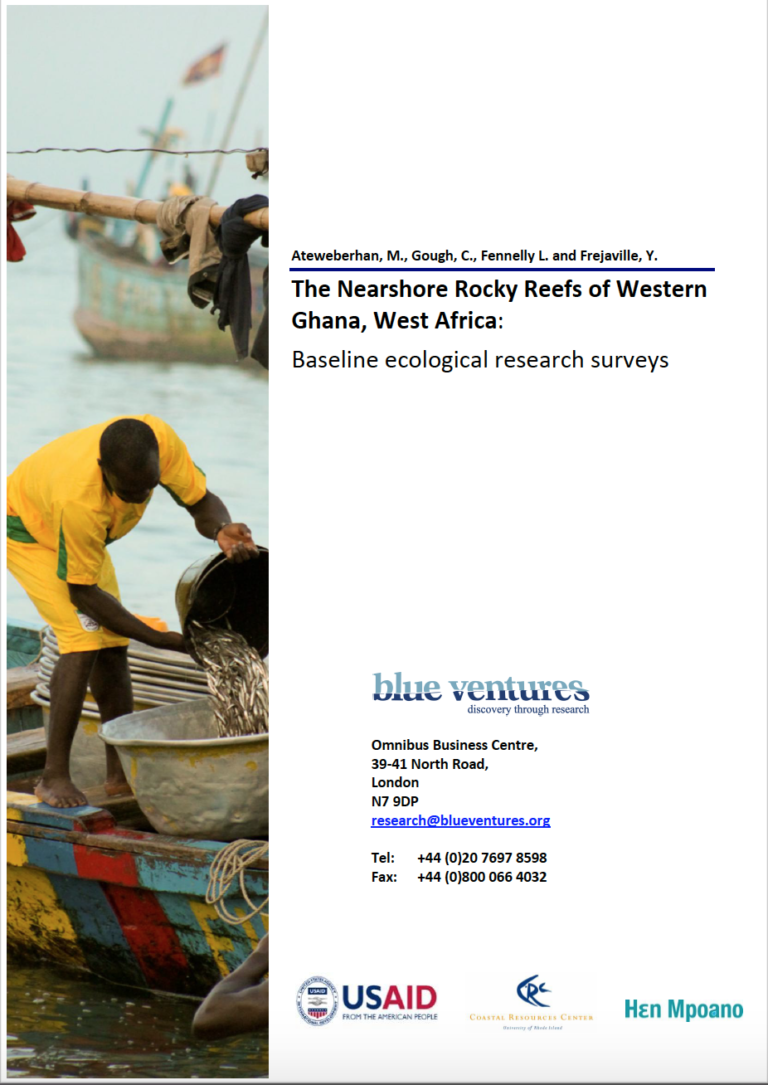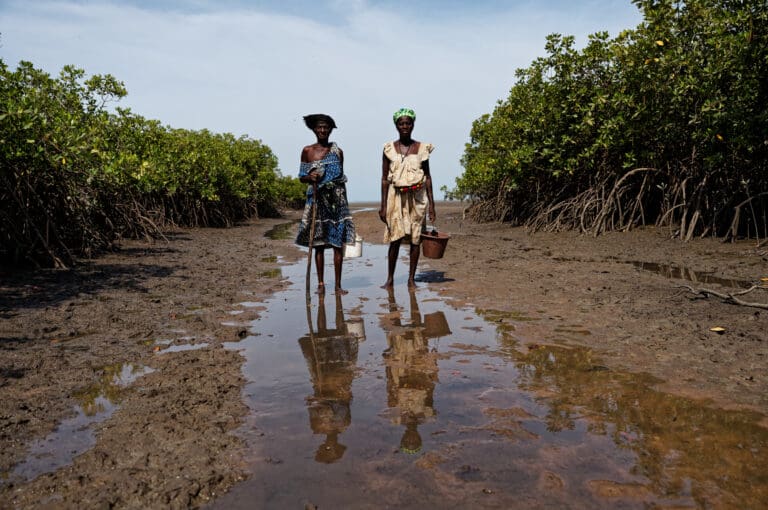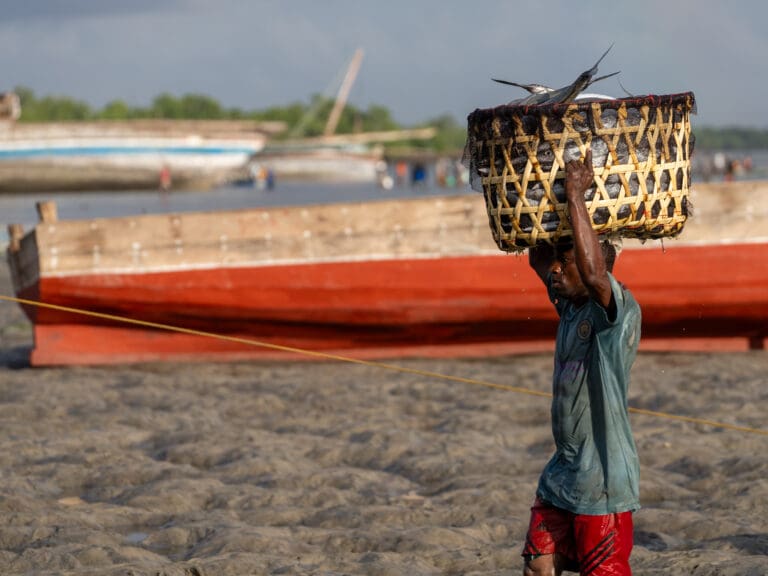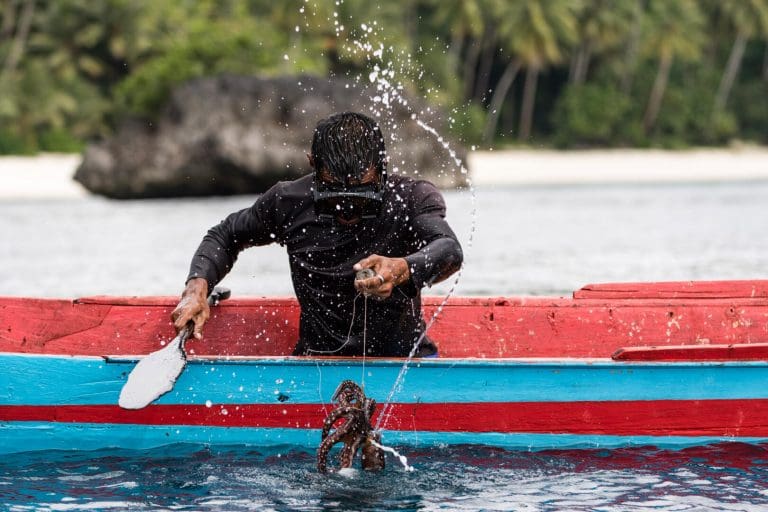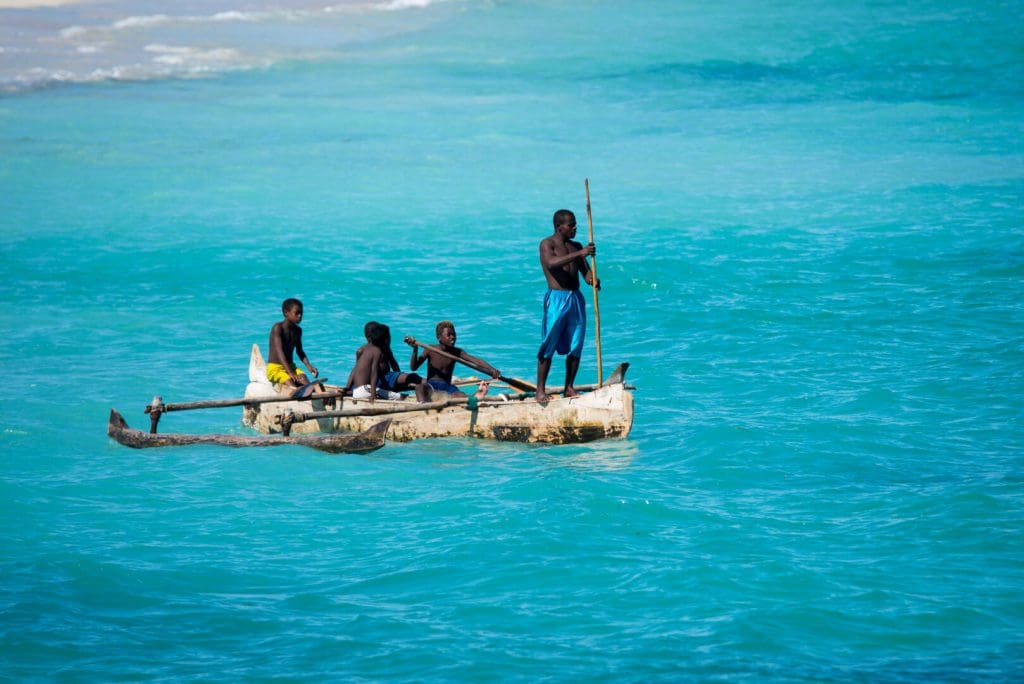EXECUTIVE SUMMARY
Ghana’s coastal region supports productive fisheries that provide a major supply of protein and significant economic support to the nation. Over the decades poor fisheries governance and management – in large part due to the open access nature of the fisheries, overfishing and the use of destructive fishing methods – have led to marked declines in fisheries landings.
With the majority of studies focusing on the more productive and commercially more important pelagic and deep demersal environments, ecological information on the near shore rocky reef habitats (NSRH) of Ghana and West Africa in general is very limited. The present study fills this knowledge gap, by investigating the general status of the NSRH and fisheries of western Ghana, providing baseline information on the fish, invertebrate and benthic communities.
Results point towards extreme overfishing in these habitats and provide empirical evidence in support of the call for effective fisheries management.
Fish community is characterised by low biomass and dominated by small-sized lower trophic groups
Fish abundance data shows that sites were categorised by three main groups: 1) those dominated by surgeonfish (Acanthuridae), 2) those dominated by damselfish (Pomacentridae) and jacks (Carangidae) and 3) those dominated by wrasse (Labridae).
Overall fish abundance was explained predominantly by the large number of small bodied pomacentrids and labrids occurring mostly at shallow depths.
Species richness and diversity indices suggest intermediate to high levels of disturbance, with the physical removal of fish preventing species from achieving high levels of abundance.
The average biomass observed in this study was low (399 kg ha-1) consistent with the dominance of small sized, low trophic level fish indicating high levels of exploitation.
The highest biomass observed in this study (1000 kg ha-1) may be indicative of the productivity potential of the area; however 69% of this biomass comprised low trophic groups, suggesting that the potential biomass could be considerably higher if fishing pressure was reduced.
Fisheries in these NSRH are dominated by one-man unmotorised canoes deploying either hook and line, or set nets at the transition between the rocky and soft bottom areas. Hook and line fishing is known for being very selective targeting mostly carnivorous, and particularly piscivorous fish. Large predatory fishes were virtually absent and most predators observed during the study were small sized groupers. As large bodied and more aggressive grouper species are removed by fishing, competitive release may allow populations of the small sized grouper Niger hind, Cephalopholis nigri, to dominate.
The dominance of NSRH by low trophic level, small bodied fish and near absence of large sized carnivorous fish suggests that fishing pressure plays a prominent role in structuring the community.
Many of the species targeted by local fisheries in the NSRH are reef associated resident populations and local management could be a highly effective approach in species protection, as well as in facilitating habitat restoration and the recovery of depleted stocks.
Given the low diversity and functional redundancy of NSRH habitats, as well as their poor benthic complexity and high species-level dominance at every level of the ecosystem, if present levels of fishing intensity continue these ecosystems will have little capacity to resist or recover from future acute disturbances.
Management recommendations
Effective management of these areas is likely to be critical to restoring key functional groups and safeguarding ecosystem resilience.
An ecosystem-based management approach involving a combination of a network of small marine protected areas (MPAs) with multiple use zoning is suggested as the best model. The network of marine protected areas (MPA) should include core ‘no-take-zones’ at their centre, surrounded by temporary closures and gear restriction zones. Core no-take-zones will allow full recovery of populations, increasing the size and biomass of fish stocks. In the long term this will also benefit adjacent common use areas through supply of adult fish and larvae for recruitment (spill-over effect).
Fisheries management through gear and catch restrictions will limit overfishing and habitat destruction, thereby promoting recovery of fish biomass, restoration of habitat, enhancement of ecosystem resilience and sustainability of fisheries.
An integrated ecosystem approach should be followed as far as possible by considering spatial links and interconnections of NSRH with other adjacent environments so that maximum management benefits can be achieved.
The rapid coastal population growth and urbanisation of western Ghana, notably through the expansion of industries such as agriculture, oil and mineral mining, means that natural resource conservation and management will require high levels of integration and the involvement of multiple and diverse stakeholder groups. Co-management of MPAs with primary stakeholders such as local village councils, chief fishermen and chief fisherwomen, fish-traders, and fishmongers should be followed to help ensure that management plans are met with high levels of compliance by local communities and other stakeholders.
In addition to conservation of coastal biodiversity and vital resources, responsible fisheries management will provide an opportunity for Ghana to safeguard it traditional coastal culture and fishing heritage, and achieve meeting its international obligations of conservation and sustainable development and play a regional role of responsible participatory coastal stewardship.

